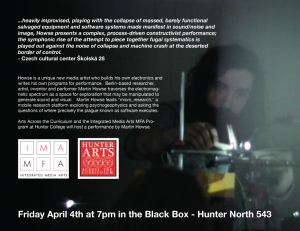Archive for the ‘bioart’ Category
Question of Intelligence
Before COVID-19 shutdown New York City, I had the opportunity to experience the exhibition “The Question of Intelligence – AI and the Future of Humanity” curated by Christiane Paul at Parson’s Kellen Gallery. I did not enter the exhibition expecting to witness disparate algorithms animating the exhibition space. It took me a few minutes to realize that the empty gallery (populated only by myself and two silent gallery sitters busily working, I suppose, on their school work) was brought to life by artworks forced to listen to one another and respond. I’m talking about artworks sensing via microphones, cameras, the internet; processing through artificial intelligence, machine learning, algorithms; and communicating via speakers, projectors, screens, printers, the internet and miniature swamps.
Christiane Paul has assembled elder artificial intelligence artworks over 40 years old (though still learning) with nascent works just starting to realize themselves. With the popular explosion of catch phrases including “Big Data,” “AI,” “Machine Learning,” “Today, right now, you have more power at your finger tips than entire generations that came before you…” (I used to appreciate Common before the Microsoft commercial, now I cringe when I hear his voice), Paul has curated a learning experience that recognizes the generational history of artificial intelligence as a creative medium.
Upon entering the gallery, one hears female artificial voices generating poetry or relating temperatures and soil humidity and other environmental measures or in the distance an occasional tweet. To the left, I saw a big black microphone and elected to approach it as the first means toward interactivity. I introduced myself and then watched my words projected onto the wall along with Chinese-style landscape paintings. Trails are drawn from word groupings to word groupings along with drawn landscapes and icons forming a word and image map. The projection is a mind map generator based on the words captured by the microphone. Following a few phrases, I decided it wasn’t very interesting and decided to move on. Adjacent to it is Lynn Hershman Leeson’s chatbot Agent Ruby (2001), but having interacted with one of Leeson’s works at Yerba Buena’s “The Body Electric” recently, I only spent a minute with it before moving on, also it didn’t know what to make of what I was telling it.

Adjacent to the chatbot, is Lior Zalmanson’s “image may contain” in which the artist feeds historically significant images into FaceBook’s Automatic Alternative Text image recognition algorithm, an accessibility AI to help contextualize images for the blind and sight impaired. The artists uses the uncontextualized and minimal description of the historical images to identify “similar” images and then collapses them onto lenticular prints. Above are the images that appear in the first print as I move from left to right. The work simply and clearly shows that bots such as AAT should not be used to present information and least of all pretend to be a source of knowledge, at least not yet.
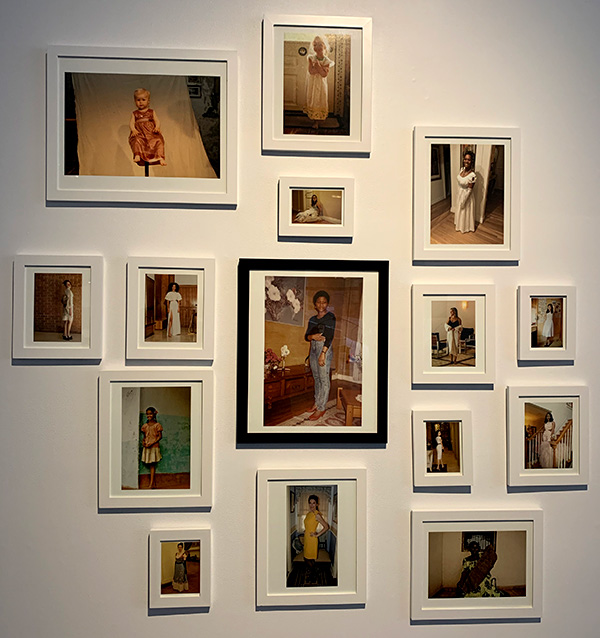
Similarly, Mimi Onuoha uploaded a photo of her mother “to Google’s reverse image search, which allows one to upload a picture to find online images that the Google algorithms identify as related.” Scaled, printed and framed from the initial image at the center to the algorithmically related images encircling, a seemingly family home portrait wall appears, leading one to question the process of algorithmic categorization based entirely on visual similarity. With such a project, I can’t help but recall eugenics and Sekula’s “The Body and the Archive.”
I then circled back toward the center of the gallery to try and figure out what was going on with “The Giver of Names” by David Rokeby. And it wasn’t until I read the instructions and changed the objects on the pedestal to assemble my own still life that the brilliance of the exhibition really dawned on me!
“The Giver of Names” (naming since 1990) consists of a monitor, speaker, old CCTV camera, pedestal, pile of old toys and a program that tries to understand what it is seeing through the camera to generate poetry. Once I removed the toys left on the pedestal and placed my own selection, I watched the AI go into action by identifying shapes and colors and then trying to make sense of what it was identifying or “seeing.” Those shapes and colors feed a poetry algorithm that speaks and writes to the monitor adjacent to the CCTV camera. Meanwhile, just beyond this installation, the not very interesting mind mapping microphone is also capturing this generated poetry as it echoes across the gallery and starts mind mapping away. AWESOME! The gallery is its own loop of machines churning away at one another’s utterances. This realization helped me refocus my attention and expand my time with each work. I tried to capture this in the video at the top of this entry.
Near the entrance on a wall monitor, hangs AARON which I had merely paused at for a few seconds but now returned to observe. “AARON is the earliest artificial intelligence program for artmaking and one of the longest running ongoing projects in contemporary art. Harold Cohen started creating AARON at UCSD in the late 1960s and developed the software until his death in 2016. In this video AARON produces a new color image every 10 to 15 minutes.” As one tours the gallery, AARON is quietly working away creating shapes and lines of color, artful abstractions.
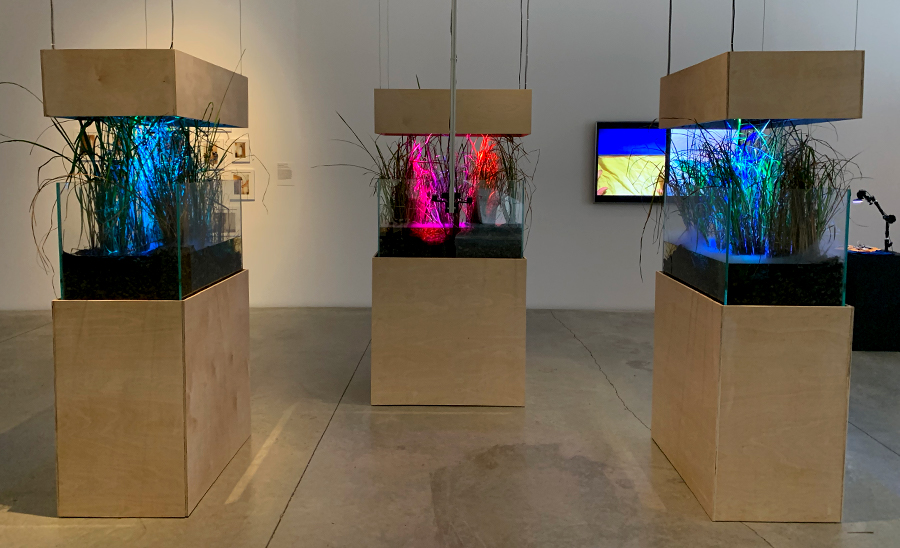
Back near the center of the gallery, just beyond “The Giver of Names” is another work with a female computer voice speaking at intervals. Tega Brain’s “Deep Swamp” asks “if new ‘wilderness’ is the absence of explicit human intervention, what would it mean to have autonomous computational systems sustain wild places?” The handsome installation has three AIs, Nicholas, Hans and Harrison each “engineer their environment for different goals. Harrison aims for a natural looking wetland, Hans is trying to produce a work of art and Nicholas simply wants attention.”
“Learning to See” by Memo Akten uses machine learning to relate the objects on a pedestal that a camera captures to five different data sets that the system has been fed. The visitor can re-arrange the objects on the pedestal to see new interpretations. Across from the pedestal on a wall is a split screen that shows the image captured by the camera adjacent to the system’s interpretation. “Every 30 seconds the scene changes between different networks trained on five different datasets: ocean and waves, clouds and sky, fire and flowers, and images from the Hubble Space telescope.
Similarly across the gallery, hang a series of prints by Mary Flanagan. The work is [Grace:AI] in which generative algorithms trained on thousands of paintings and drawings by women to create a series of images. “[Grace:AI] was tasked to create her ‘origin story’ by looking at 20,000 online images of Frankenstein’s monster and producing its portrait.”
Both “Learning to See” and “[Grace:AI]” employ generative adversarial networks (GAN), to generate new visualizations. Using GAN anyone can put their own conceptual spin to generate a data set for the machine to learn and see what it spits out. Over the last few years, I’ve seen a few similar projects, my favorite remains an early one – the MEOW Generator trained on a cat dataset.
Perhaps the most darkly monumental project are the large four black machines with spinning fans, exuding steam and ticker tape – the installation component of #BitSoil Tax by LarbitsSisters. The project proposes the fair redistribution of internet wealth to all people through a new taxation system. The installation is utopian, dark and whimsical.
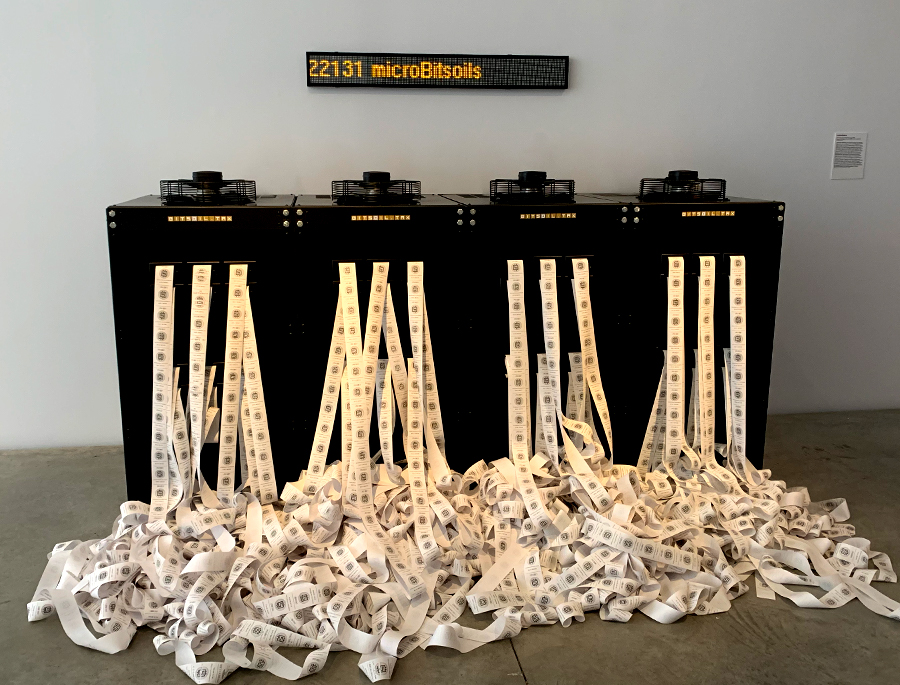
Other projects on exhibit include “Futures of Work” by Brett Wallace, and Ken Goldberg and the AlphaGarden Collective.
Donate to Community Garden – La Casita Verde

Donate money to help bring one of Sam Van Aken trees to Brooklyn! Artist Sam Van Aken has donated one of his trees from the project “The Tree of 40 Fruit” to the South Williamsburg community garden La Casita Verde. Now they just need $2500 to cover the transport cost from Syracuse to Williamsburg. Donate on line.
Mart Howse Performing at Hunter College, April 4th, 7pm
Arts Across the Curriculum and the Integrated Media Arts MFA Program at Hunter College will host a performance by Martin Howse on Friday April 4th at 7pm in the Black Box – Hunter North 543.
Martin Howse is a unique new media artist who builds his own electronics and writes his own programs for performance. Berlin-based researcher, artist, inventor and performer Martin Howse traverses the electromagnetic spectrum as a space for exploration that may be manipulated to generate sound and visual. Martin Howse leads “micro_research,” a mobile research platform exploring psychogeophysics and asking the questions of where precisely the plague known as software executes.
Recently the Czech cultural center Školská 28 described Martin Howse performance as
“heavily improvised, playing with the collapse of massed, barely functional salvaged equipment and software systems made manifest in sound/noise and image, Howse presents a complex, process-driven constructivist performance; the symphonic rise of the attempt to piece together fugal systematics is played out against the noise of collapse and machine crash at the deserted border of control.”
Turntable Garden and Cafe, Helsinki
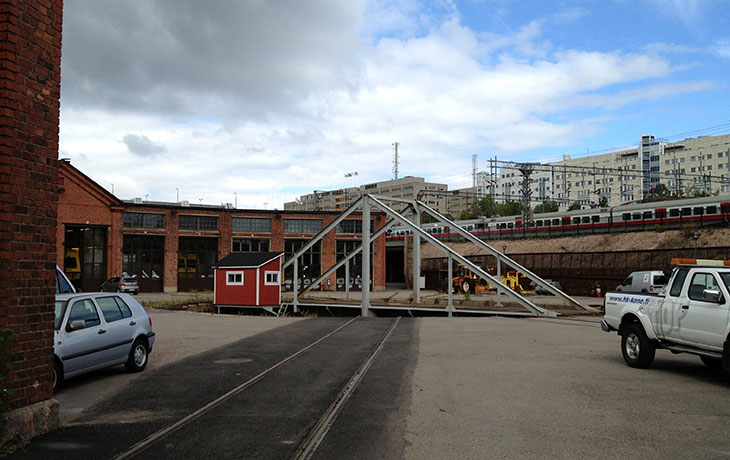
An unused railway turntable
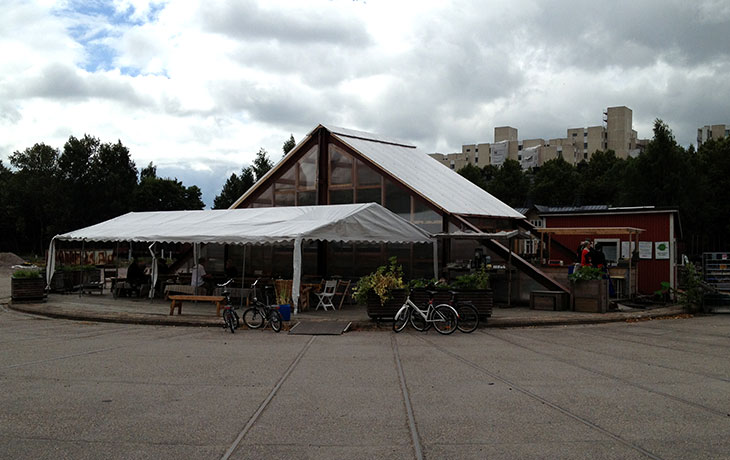
The transformed railway turntable, now a garden and cafe
In August, Brooke and I had lunch at the Turntable Cafe located in old railroad yards of Helsinki. We were primarily doing research regarding urban composting and gardening. These railroad yards had been abandoned and in 2012, one of the railway turntables was transformed into a greenhouse and rebranded as Turntable, an experiment in urban gardening. During the summer months, every Friday lunch is available at Turntable and the food that is served is made from what is grown at the garden. Turntable is a great example of industrial wasteland being transformed into a productive area by a small group of people. The food was delicious and inexpensive.
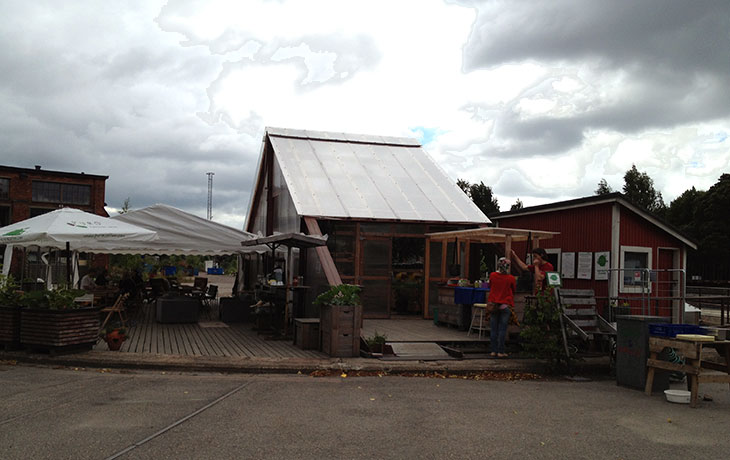
The transformed railway turntable, now a garden and cafe
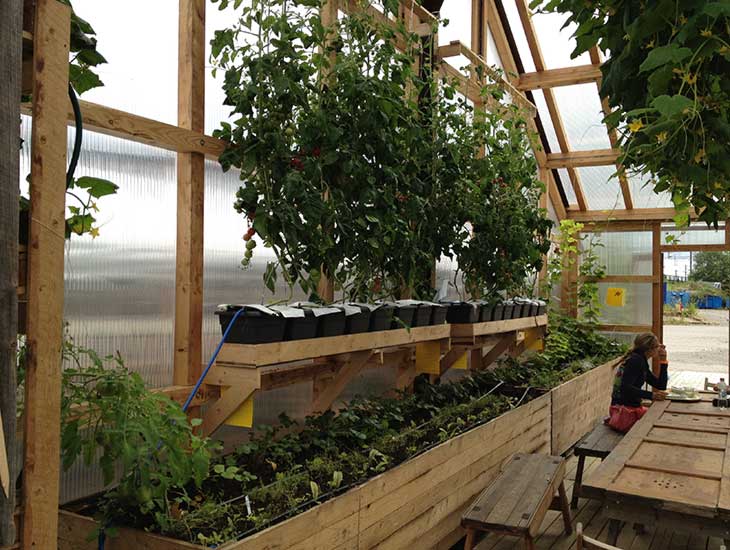
The interior garden
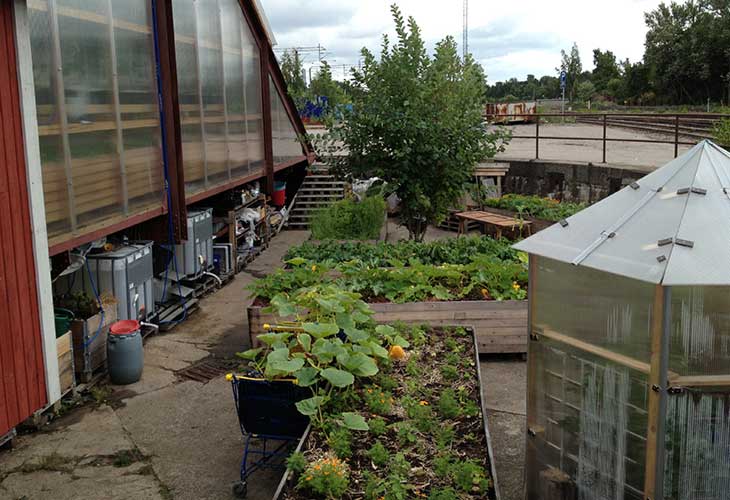
There is water collection below the structure
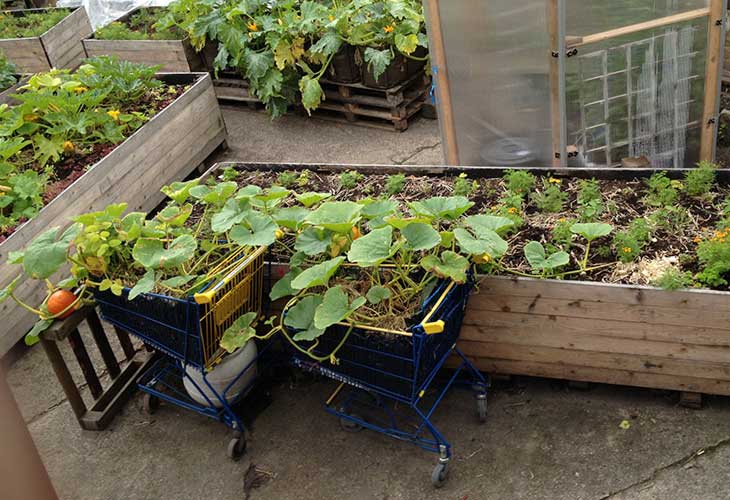
Even shopping carts have been transformed into mobile gardens
The greenhouse built around the turntable i-beams can easily be deconstructed. I found more information regarding Turntable on the portfolio site of Paiva Raivio, one of the artists who collaborated on the transformation of the railway turntable in to the garden and cafe, she states
Turntable is an urban garden, cafe, greenhouse and an open, public space situated in Pasila´s historical railway yard. It was set up by Dodo´s activists: Jaakko Lehtonen, Kirmo Kivelä, Joseph Mulcahy and myself.
The spot is where Dodo´s (an environmental NGO based in Helsinki) urban farming movement begun when gardeners took over a wasteland in 2009. In 2012 we transformed Turntable into an urban farming test lab and source for learning and inspiration. During it´s first year in action Turntable has offered various workshops, events and locally grown food in the Turntable-cafe. The garden also has a beehive, dry toilet, composts, cob oven and solar panels to produce energy.
Go to Paivi Raivio’s page on Kääntöpöytä / Turntable Urban Garden to read more and see photos.
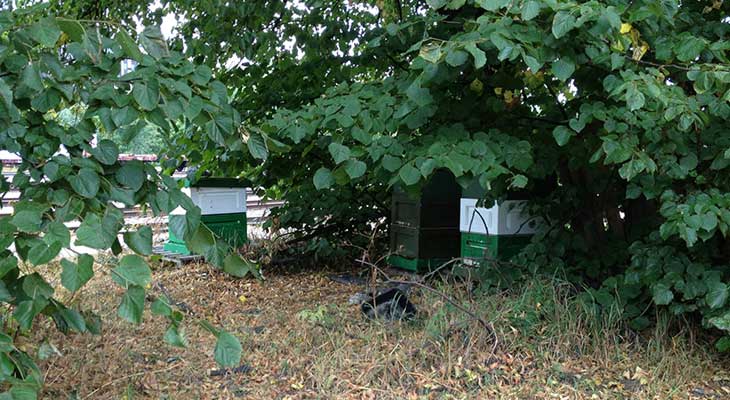
Turntable also has honeybees
BiofiliA – Base for Biological Arts
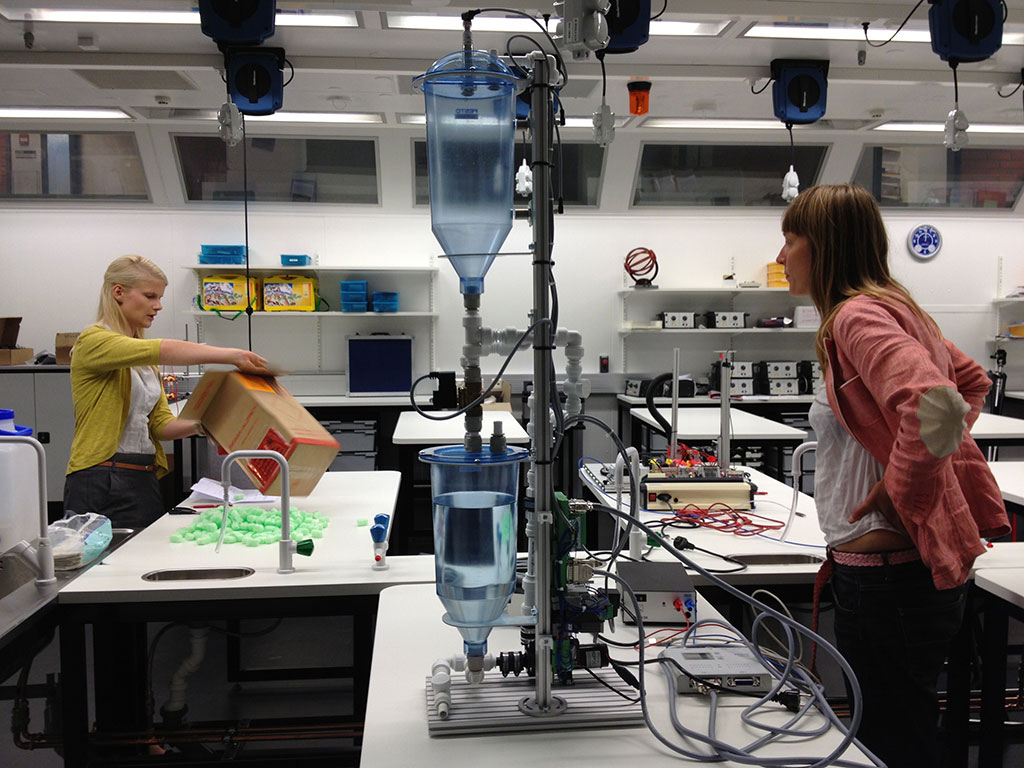
Biofilia manager (left) and Ulla Taipale (right)
Last week, our friend and artist Minna Langstrom introduced Brooke and I to Ulla Taipale who is coordinating BiofiliA – a bio-art lab at Aalto University in Helsinki. Ulla was so generous as to give us a tour of the lab which consists of an electronics area, a wet lab and biology lab. It was amazing to see a university dedicating the funding and facilities to a relatively avant-garde practice of combining biology and art. Pictured above is Ulla to the right and the lab manager a recent bio graduate of the university.
As the BiofiliA site states, the project is “a biological art unit was launched under the Aalto ARTS in 2012. It offers a platform and infrastructure for trans-disciplinary research and education that aim at creating cultural discussion and innovation around the topics related to the manipulation of life and biological processes at a practical and theoretical level, including philosophical and ethical dimensions…”
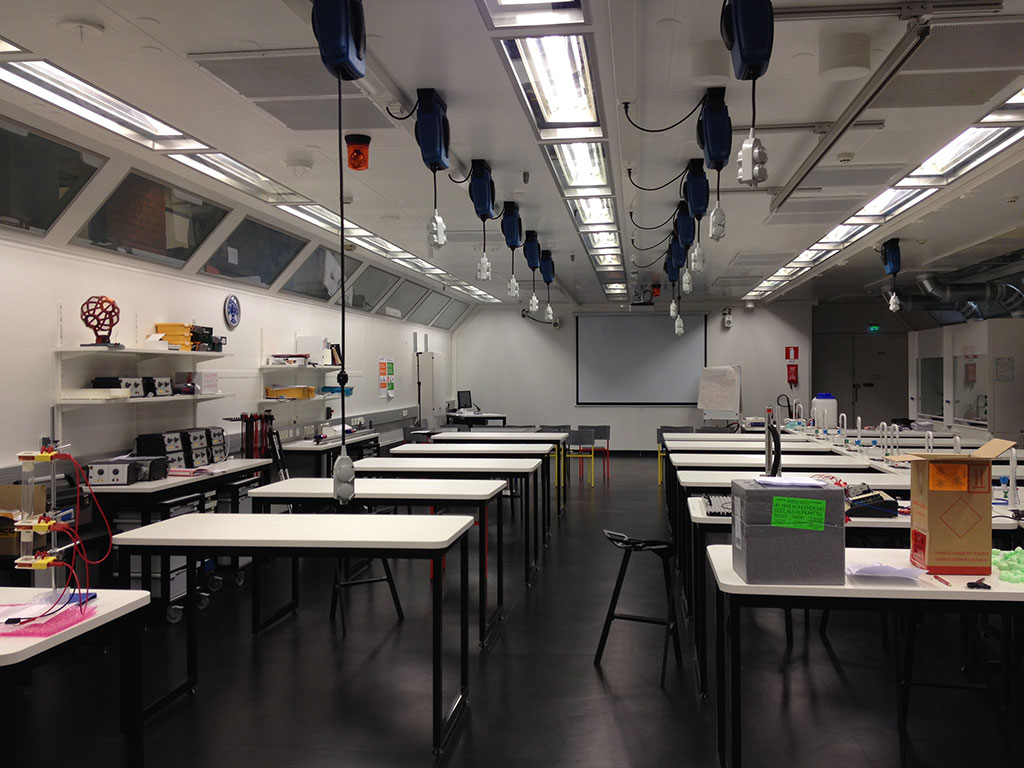
Biofilia lab
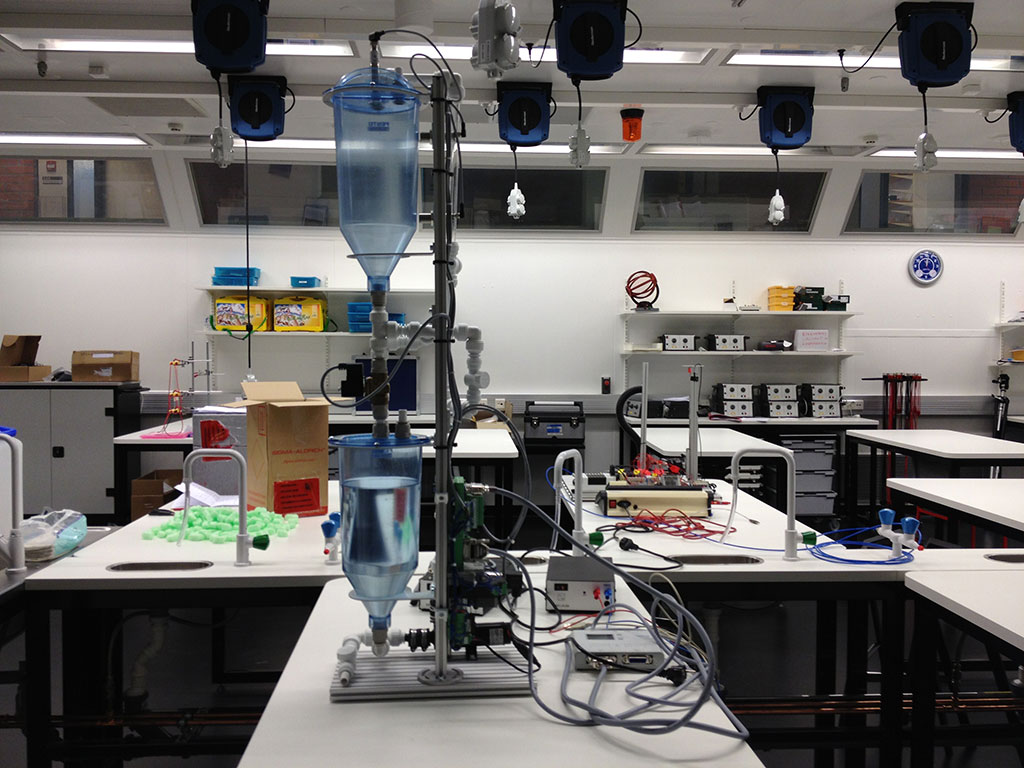
Biofilia lab
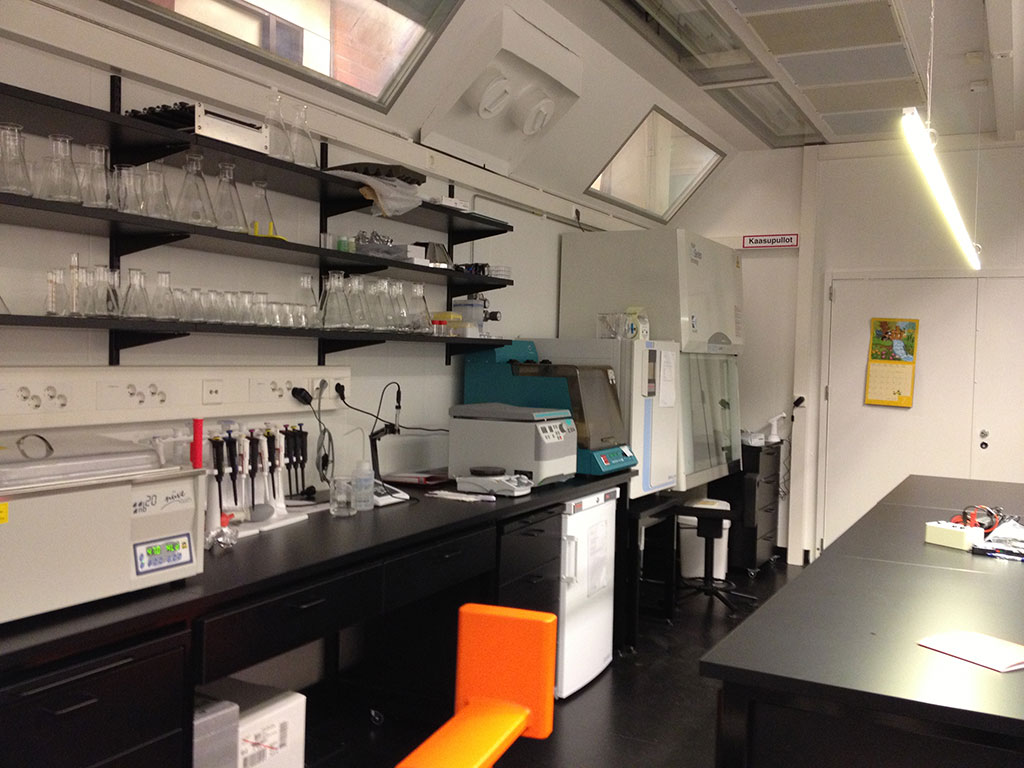
Biofilia lab
Artists that have worked collaboratively with scientists at BiofeliA include Oron Catts of SymbioticA, Christina Stadblauer, Kiran Gangadharan, Agnes Meyer-Brandis and they hope to bring Paul Vanouse for 2014. Art and biology students may take courses at BiofiliA and work along side of resident artists.
One of the ongoing projects exists outside the labs – Hexa-Hive Village an experiment with urban bee keeping. The hives were designed by Christina Stadlbauer and Kiran Gangadharan. And beyond producing honey, Till Bovermann of Media Lab Helsinki has installed contact microphones in one of the hives for “project hive listening.”
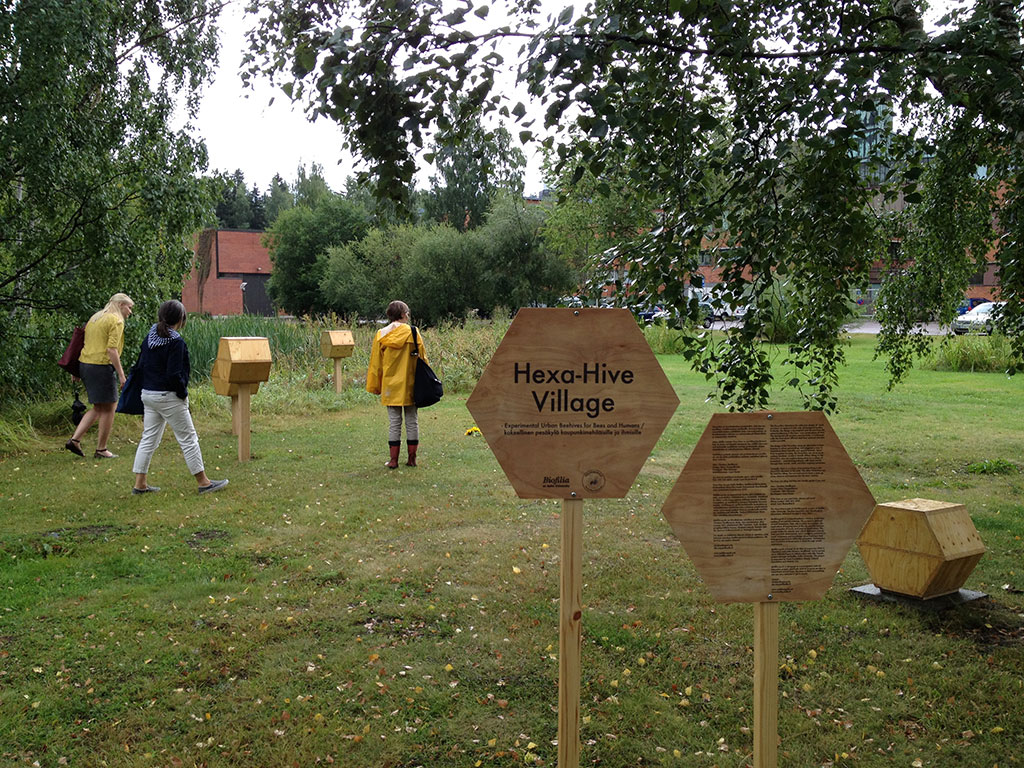
Hexa-Hive Village, a BiofiliA project
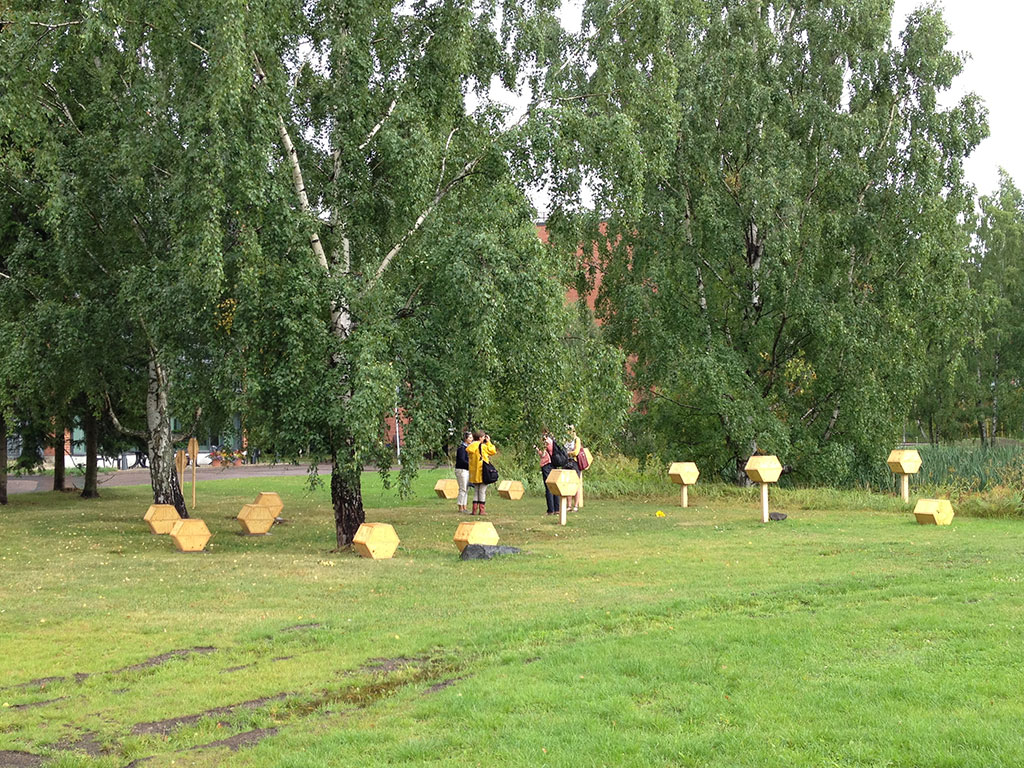
Hexa-Hive Village, a BiofiliA project
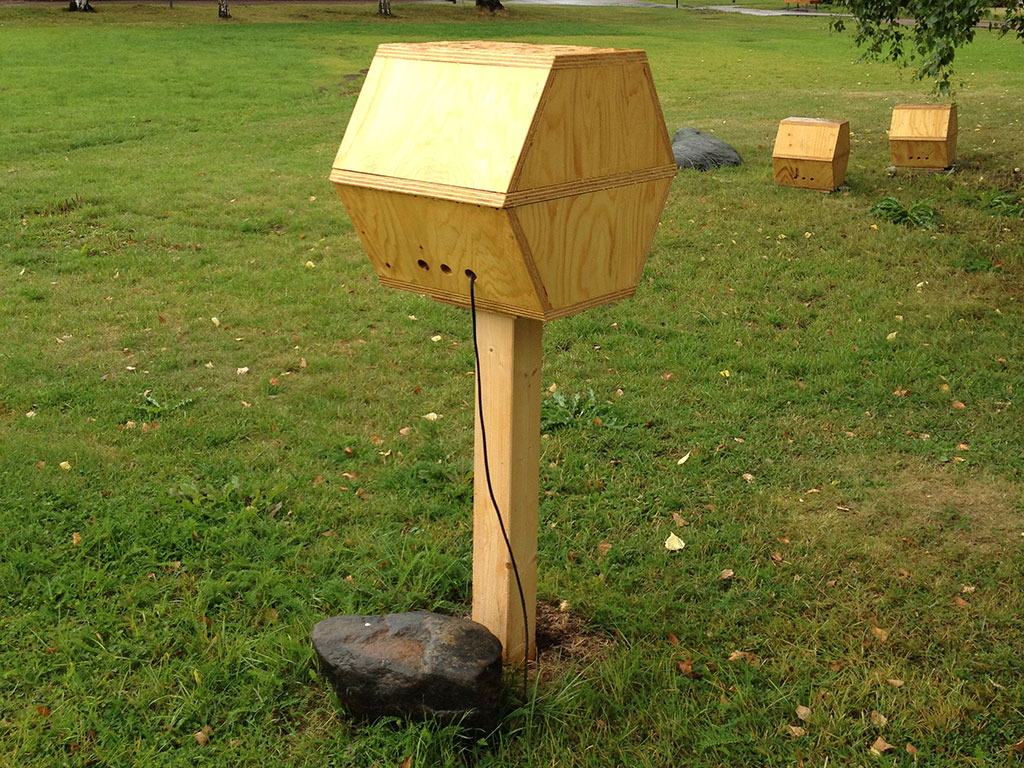
Hexa-Hive Village, a BiofiliA project
